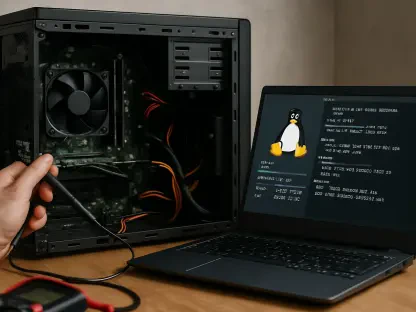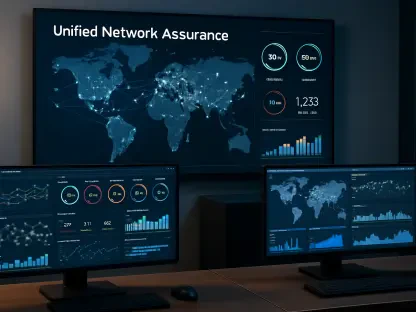On July 15, a significant Xfinity internet outage left thousands of customers in Albuquerque, New Mexico, and Sacramento, California, disconnected. Highlighting vulnerabilities in digital infrastructure, these disruptions underscored how susceptible essential services are to external factors. In Albuquerque, around 15,000 residential and commercial Xfinity customers were affected by an accidental fiber optic line cut. This mishap occurred after a crew from the New Mexico Gas Company unintentionally damaged the line while tackling a nearby gas leak. Swift repair efforts, however, did not assuage the mounting frustration among Albuquerque’s affected residents and businesses.
Albuquerque’s Infrastructure Challenges
Accidental Damage Leads to Outages
The mishap in Albuquerque that led to substantial service outages serves as a stark reminder of the delicate nature of digital infrastructures and their susceptibility to external disruptions. The accidental severance of a Comcast fiber optic line not only cut off internet access for approximately 15,000 Xfinity users but also drew attention to potential pitfalls in coordination between utilities and internet service providers. As connectivity plays a pivotal role in everyday operations, Albuquerque’s businesses and residents found themselves grappling with unexpected downtime. Affected individuals voiced mounting frustration over the duration of these service interruptions, highlighting the dependence on uninterrupted access to digital communication channels.
Broader Implications for Service Providers
The incident in Albuquerque underlines broader implications for internet service providers and utility companies. Emphasizing coordination failures, it raises questions about emergency protocols and inter-agency collaboration during infrastructure projects. Such disruptions highlight the need for comprehensive measures to address and mitigate risks that could impact essential services. Service providers, having a pivotal role in maintaining seamless connectivity, are urged to implement heightened protective protocols during infrastructure maintenance and similar undertakings. Increased emphasis on communication and coordination can act as vital measures to safeguard against accidental damages that disrupt community connectivity and daily operations.
Sacramento’s Struggle with Vandalism
Acts of Sabotage Create Havoc
In Sacramento, digital infrastructures faced a different threat—a deliberate act of vandalism causing extensive disruptions. The attack targeted a utility pole, setting fire to it and severing crucial fiber lines that provide internet services to thousands. This calculated vandalism plunged the city into an unexpected blackout, halting various activities reliant on digital connectivity. Comcast characterized the incident as sabotage, signifying a more insidious threat than natural accidents. Among those bearing the brunt of this disruption were Sacramento’s local businesses, notably independent bookstores operating during pivotal sales periods. Mechanical sales systems became inoperative during high-traffic events, drastically affecting business operations.
Addressing Vulnerabilities in Digital Networks
The Sacramento incident exposes critical vulnerabilities within digital networks, emphasizing the imperative need for proactive measures to combat similar threats. The extensive impact on local businesses accentuates the tangled web of reliance on uninterrupted connectivity, with outages hampering economic activities. As cities become increasingly digitally interconnected, safeguarding infrastructure against acts of sabotage emerges as a priority. This calls for enhanced preventative measures focused on protecting crucial internet infrastructure components from external malice, ensuring no disruption in connectivity services. Proactive efforts, including heightened surveillance of key infrastructures and collaboration with law enforcement agencies, are integral to addressing these pressing concerns.
Toward Resilient Infrastructure
Strengthening Digital Networks
The combination of accidental and deliberate disruptions in Albuquerque and Sacramento serves as a clarion call for bolstering infrastructure resilience. Such events underscore the growing imperative for internet service providers to implement robust protective measures and ensure strategic coordination with external agencies. As urban environments edge closer to relying on seamless internet connectivity, strengthening infrastructure protection isn’t a choice—it’s a necessity. Providers are called upon to innovate and invest in technology solutions that can preemptively identify and mitigate threats, both accidental and intentional. Through active collaboration and investment, service providers can aspire toward building digital networks that withstand challenges.
Building Trust Through Reliable Service
On July 15, a major Xfinity internet outage severed connections for thousands of customers in Albuquerque, New Mexico, and Sacramento, California, spotlighting potential weaknesses in digital infrastructure. The disruptions brought attention to the vulnerability of key services when faced with external disturbances. In Albuquerque, roughly 15,000 homes and businesses relied on Xfinity and were crippled by an incident where a fiber-optic line was inadvertently cut. This accident occurred as the New Mexico Gas Company crew was working on a nearby gas leak, unintentionally damaging the telecommunications line. Although repair teams moved quickly to address the issue, their efforts did little to ease the growing discontent among those affected. Albuquerque’s residents and businesses experienced significant disruptions, revealing how reliant communities are on stable internet connections for daily operations and underscoring the importance of safeguarding these vital services against unforeseen mishaps.









